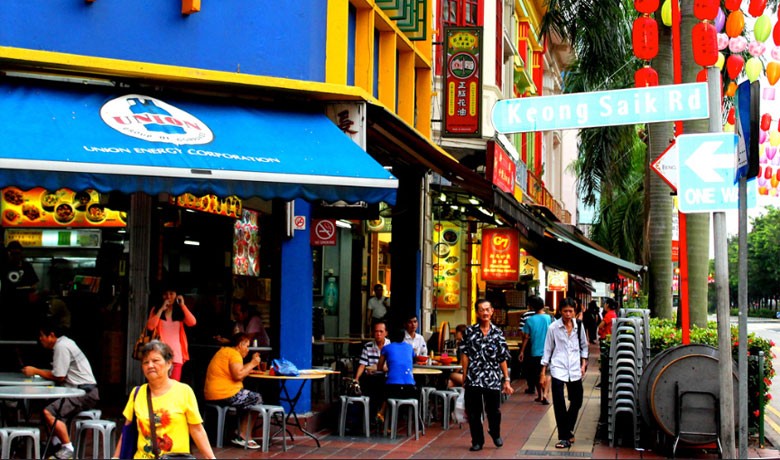
Btrax Design Company > Freshtrax > What Silicon Va...
What Silicon Valley Can Learn From Southeast Asia (Part 1)
This year, I had the privilege to speak at a large scale tech event in Singapore. Tech in Asia 2015 attracted an audience of more than 3,000 people. More than 75% of attendees came from outside of Singapore. Considering it was a tech event held outside of the Bay Area, I was quite impressed with its size, quality, and content.
We had speakers from all over the world, including partners from YC and 500 Startups, famous entrepreneurs from Asia, and people from governmental organizations. This particular event symbolizes the scale and traction of the Asian economy.
While I was impressed, to be quite honest, I also felt scared and sad about what is happening in the Bay Area and Japan. First off, as an organizer of the annual JapanNight event, a pitch competition for top Japanese startups, the scale of the events were totally different. We have run the JapanNight event in Tokyo and San Francisco for the last five years. The average size of the audience is about 400 in both cities.
Obviously, the number of startups in Japan is small compared to that of some Asian countries such as Singapore, Malaysia, and Vietnam. And quite naturally, the scale of the startup community is small, too. This causes me to really worry about the future of Japan, the country where I was born and raised.
Secondly, the business environment and culture I experienced in Singapore was equal to if not better than that of Silicon Valley. I have been working as the CEO of a company which utilizes technology and design in San Francisco for more than ten years. Of course, I am heavily involved in the Bay Area’s startup community. And just like anyone could easily guess, it was my belief that this was the one and only location for startups to succeed globally.
As a pseudo native to Japan and the SF Bay Area, my week-long experience in Singapore woke me up and changed the course of my thinking.
Why will Southeast Asia Excel?
Although you may think Southeast Asia is still catching up with the Western world, some countries, such as Singapore, are already in full speed in terms of its market, people, technology, and economical values. To be clear, I am not just saying they are advanced in the Asian market; they are actually very competitive in the global market. In fact, I felt that they excelled in some fields over the U.S.
In particular, Singapore attracts top global talent not only from other parts of Asia but also from Europe, the Middle East, and the U.S. I have seen many non-Singaporeans, regardless of their nationality, race, or religious background, aim for huge success in the country. Singapore is truly diverse and dynamic. In some regards, Singapore could be more diverse and open than the U.S., especially when it comes to who succeeds in business.
The Best of Both Worlds
This is especially true of Singapore, because I feel they are surprisingly open to different values. They might be even more open than in the U.S. in terms of keeping Asia’s culture of integrity. For example, the restaurants in Singapore provide a high level of service regardless of the price point or status of the place. They combine a great mixture of Asian integrity with the logical side of western culture when it comes to business.
Another example is in the category of taxi hailing services. Beyond Uber, which originated from San Francisco, Malaysian startup GrabTaxi has achieved much popularity throughout Southeast Asia. If you compare those two companies, you will realize that Uber focuses primarily on the system while GrabTaxi puts priority on the local drivers and their customers.
The CEO of GrabTaxi, Anthony Tan, was one of the main speakers at the event. The Harvard graduate talks about the importance of people and maintaining harmony among different stakeholders of his business. This is quite a difference from Uber’s “Power Game” approach.
The Lack of Big Boys
One of the most overlooked aspects of the potential of Southeast Asia is the fact that there are not too many existing players. In other words, there are huge opportunities for small startups to be successful because there are only a few existing competitors they need face.
Obviously, except for a few countries, they still have challenges with infrastructure, but time will help solve the problem.
Products Produced by the New Generation
Regardless of where you are, the majority of people in the startup community tend to be young. However, every country or even city has a slightly different level of energy and momentum. While going to multiple parties in Singapore, I noticed that the many young people there did not seem to worry about their future.
Just like in Silicon Valley, they are not afraid to talk to somebody they do not know to explain their products. This is quite a surprise among Asian countries. They feel they are the ones creating the new era. That attitude is very rare in developed countries where large corporations have already taken the lion’s share of the market.
Although the tax rates and cost of owning a car in Singapore are outrageously high (more than 5x the prices in the U.S.), I saw many young entrepreneurs and investors drive expensive cars. This definitely motivates those who are aiming for success.
On the other hand, while talking to them, I noticed that most of them are more interested in influencing the society than making money.
Let’s look at the statistical data of the Singaporean population.The average age of the country is 33.8, ten years younger than the average age of a Japanese person, which is 46.1.
The graph below shows the average age of the internet population in Southeast Asia. In every country, the majority of the population is below 45 years old.
The age of the internet population in Southeast Asian countries

When you look at the population breakdown, it is pretty obvious that Japan is falling way behind in terms of the younger generation. This will affect the future direction of global business. The lack of a large elderly population in Singapore is one of the biggest reasons why young entrepreneurs have huge potential to make significant breakthroughs. They can challenge the status quo with fewer limitations.
Singapore

Japan

USA

If You Think the US is Diverse, Think Again
As Southeast Asia consists of multiple of different countries, the common language there is English. This means whatever products they produce for the whole Asian market could target the global market. This simple fact is often overlooked, but it is very crucial in making it easier for them to expand globally.
Moreover, as many people move between different countries in the region, there is no concept of “minority” there that compares to that of the U.S. In this regard, anyone could feel comfortable in Singapore. This particular concept is quite different in the U.S. No matter what we say about diversity, minorities in America still encounter limitations due to their identity.
Due to the diverse ethnic makeup of Singaporeans, people do not get trapped by the limitations caused by race or religion. This makes for a truly diverse society which is the foundation for global innovation.
Another aspect of the Singaporean workforce that demonstrates the diversity of the country is the number of women working full-time for corporations as well as for startups. There are many talented women in different industries, with leaders such as Cheryl Yeoh, CEO of the Malaysian Global Innovation & Creativity Center. I believe the number of female leaders is an important success factor for any country.
The points I have discussed in this article about diversity are definitely eye openers, especially when it comes to the absence of the “other.” In Singapore, there’s no such thing as “native” or “non-native.” Even though Silicon Valley is well known for its diversity and openness to non-native English speakers, there is still an invisible wall that divides native and non-native people.
In the Asian countries, no one speaks perfect English, and guess what? No one really cares about that. Most people have a native languages besides English, and that makes for a very dynamic society. No one needs to feel ashamed of not being able to speak perfect English. As long as you have basic skills, you are qualified to run a business there, making it very easy for foreigners to start a business.
The first thing many people from non-English speaking countries do when they come to America is attempt to learn English.Singapore gives these people an edge because they do not have to worry too much about their English skills from the get-go.
Author: Brandon K. Hill / CEO, btrax, Inc.
photo by: Les Haines
Check Out Our FREE E-Books!
Discover our FREE e-books packed with valuable research and firsthand insights from industry experts!
Dive into our collection below, and stay tuned – we’re constantly adding new titles to keep you ahead of the curve.
- Big in Japan: Global Brands Thriving in the Japanese Market, Vol. 1
- A Guide to the Promotional Seasons in Japan
- What I Wish I Knew Before Entering the Japanese Market
- 100+ Facts to Understand the Motivations Behind Japanese Behaviors
- Insights on Japan’s Changing Workstyle
- Insights into Japan’s E-Commerce and Direct to Consumer (D2C) Market







